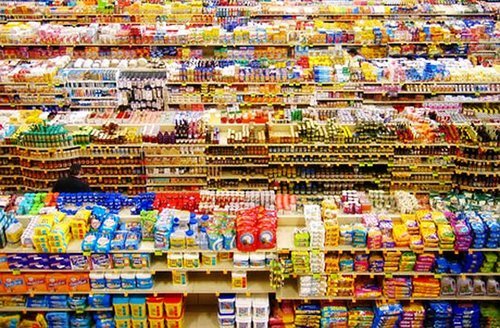How big food brands are targeting the poor
Just because something is cheap doesn’t mean it’s a good deal.
Several of America’s largest food manufacturers have been shifting their retail strategy, selling less of their packaged foods in traditional grocery stores and more of those foods in dollar and discount stores, according to a recent Reuters story. Kraft, which sells Veveeta sauce, has turned its attention to the cheaper retailers. So too have General Mills and Campbell’s Soup.
“We’re in the business of feeding all American families, and that’s where consumers are going,” Tom Lopez, vice president of growth channels at Kraft, told Reuters on Thursday.
That’s mostly true. Packaged food sales have been lagging at supermarkets—sales of packaged food were flat last year, largely because of a trend in which Americans are opting for fresher alternatives at the grocery store. Dollar stores have been the rare exception—food sales at discount stores have greatly outpaced their higher priced counterparts, prompting chains like Dollar Tree to add more room for food products. General Mills’ sales at discount stores rose by nearly 10 percent last year.
But there’s a reason why large food companies are selling more of their packaged foods to America’s poor: they have figured out a way to do it at a much higher profit margin.
In order to offer the facade of affordability, manufacturers like Kraft are selling food in smaller packages. These granola bars, sauces, cereals, and prepared meals look like they cost less, but actually are far more expensive on a per ounce basis, according to Reuters.

So long as the people you’re selling to are actively deciding whether or not to stock up at a discount or buy only for the week at a sight mark-up, it’s just a value proposition. But it’s unclear whether most of the people who shop at dollar stores have that luxury. In fact, it’s doubtful. As Dollar General’s chief executive Rick Dreiling said on a recent earnings call, “the low to middle income consumer who is our core customer continues to look for ways to manage her budget.”
In other words, people go to Dollar General to save, because they have to. And according to this Reuters story, they’re buying food that looks cheaper but is ultimately costing them more.
